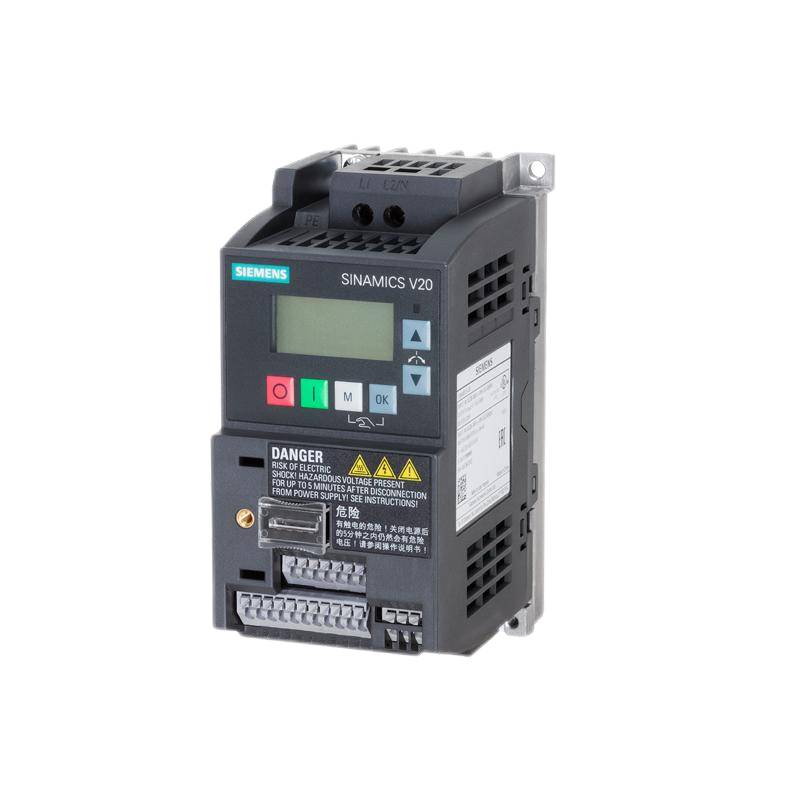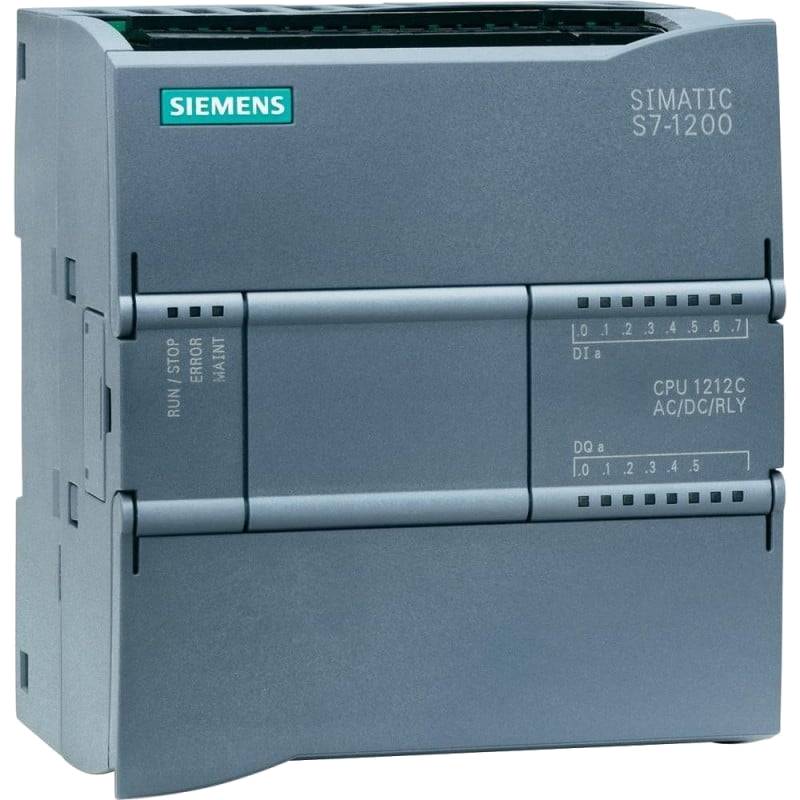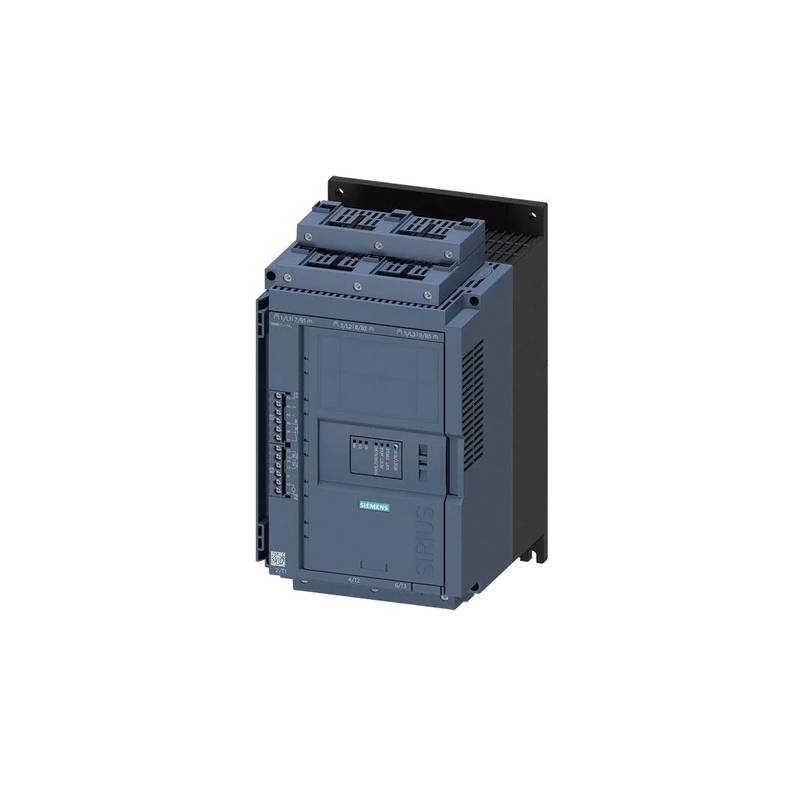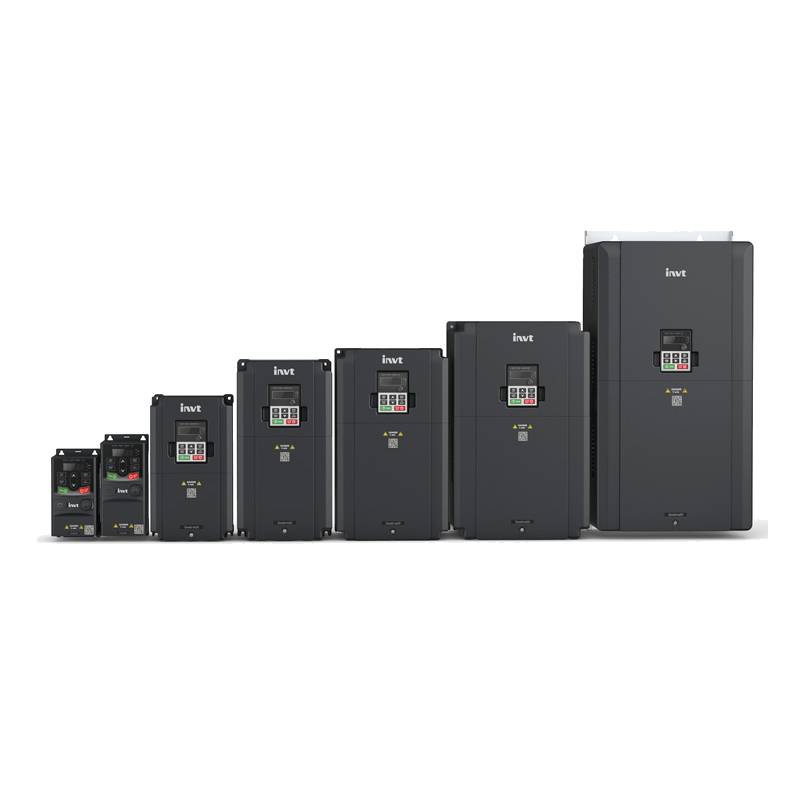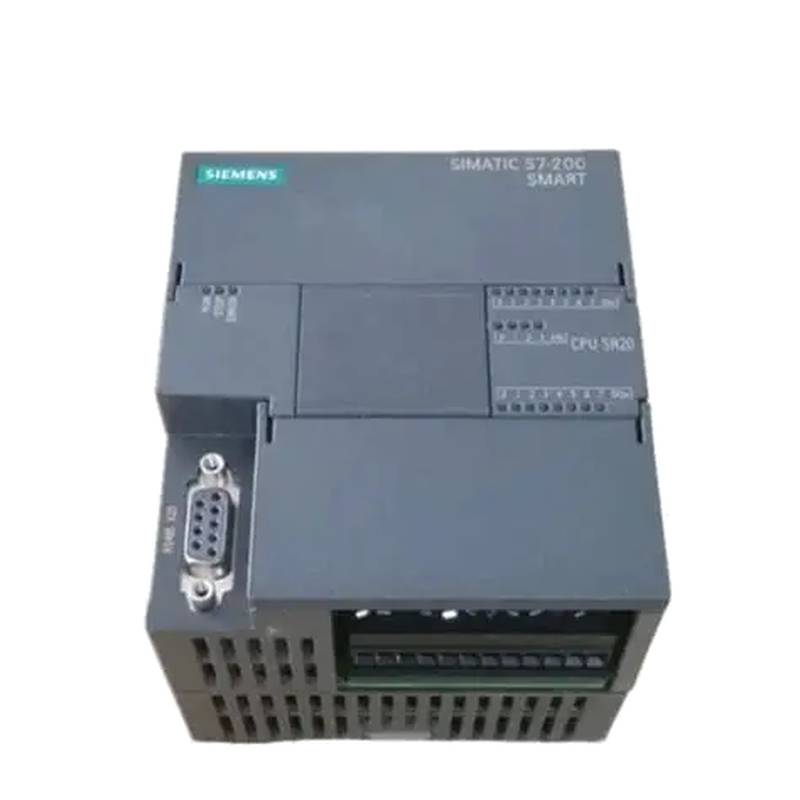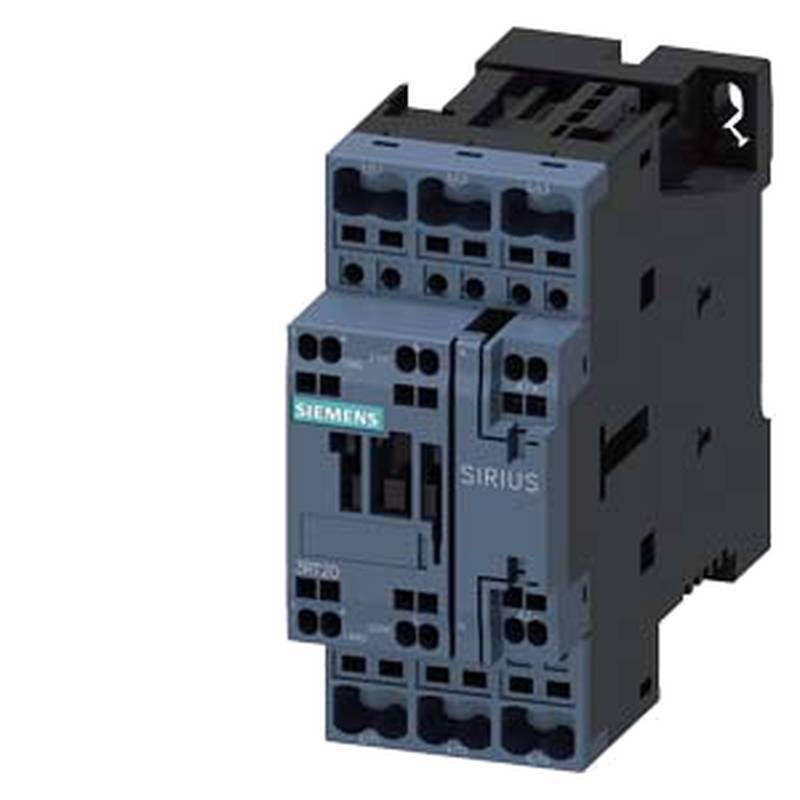
The Siemens 6SL3210-5BB22-2BV1 V20 drive is a high-performance inverter engineered for demanding industrial applications, offering precise motor control, enhanced efficiency, and robust reliability. With a current rating of 11A and a power output of 2.2kW, this V20 series inverter is equipped with an integrated brake chopper, making it ideal for applications requiring rapid deceleration and precise positioning. Its advanced vector control capabilities ensure optimal torque and speed performance across a wide operating range, while its compact design simplifies integration into existing control cabinets.
Product Specifications
| Feature | Specification |
| :------------------- | :------------------------------------------------ |
| Product Number | 6SL3210-5BB22-2BV1 |
| Series | SINAMICS V20 |
| Rated Power | 2.2 kW (3 HP) |
| Rated Current | 11 A |
| Input Voltage | 380-480 V 3-Phase |
| Output Frequency | 0-600 Hz |
| Control Type | V/f control, Vector control |
| Braking Unit | Integrated brake chopper |
| Protection Class | IP20 |
| Dimensions (H x W x D) | 202 x 140 x 176.5 mm |
| Communication | Modbus RTU, PROFIBUS DP (optional) |
| Ambient Temperature | -10 °C to +50 °C (with derating) |
Core Features & Market Positioning
The SINAMICS V20, specifically the 6SL3210-5BB22-2BV1, distinguishes itself through its user-friendly commissioning and operation, facilitated by an intuitive keypad and an optional Basic Operator Panel (BOP). This inverter is positioned as a cost-effective yet powerful solution for standard industrial drives, offering a compelling balance of performance and value. Its integrated brake chopper is a significant differentiator for applications needing dynamic braking, reducing the need for external braking resistors and simplifying system design. The V20 series is known for its energy efficiency, featuring an ECO mode that automatically optimizes motor performance to reduce power consumption during partial load operation.
Key Application Scenarios
This Siemens V20 drive is exceptionally well-suited for a variety of industrial tasks where precise motor control and reliable performance are paramount. Its integrated brake chopper makes it a prime choice for applications involving vertical movement, such as cranes, hoists, and elevators, where controlled stopping is critical. It also finds extensive use in pump and fan applications, where variable speed control can lead to significant energy savings. Furthermore, its robust design and communication capabilities enable seamless integration into conveyor systems, processing machinery, and general manufacturing automation where consistent speed and torque are required.
Practical System Integration Guidance
Integrating the Siemens 6SL3210-5BB22-2BV1 V20 drive into an industrial setup is streamlined due to its clear terminal layout and straightforward parameterization. For optimal performance, ensure the power supply meets the 380-480V 3-phase requirement. The drive's IP20 protection class necessitates installation within an enclosure to safeguard against environmental factors. Wiring should adhere to local electrical codes, paying close attention to grounding and shielding for the motor and control cables to prevent electromagnetic interference. The integrated brake chopper means that for applications requiring dynamic braking, the internal braking transistor can be utilized, significantly simplifying the electrical schematic compared to external solutions. Basic parameter setup, including motor data entry and desired control mode (V/f or vector), can be accomplished via the integrated keypad or the optional BOP.
Operation and Risk Mitigation
Safe operation of the Siemens 6SL3210-5BB22-2BV1 V20 drive involves understanding its control functions and potential fault conditions. The drive features comprehensive protection mechanisms, including overcurrent, overvoltage, undervoltage, and thermal overload protection, which automatically safeguard the motor and the inverter itself. Familiarity with common fault codes, accessible through the operator panel, is crucial for efficient troubleshooting. For instance, F0001 typically indicates an overcurrent fault, while F0002 might point to an overvoltage condition. Always ensure that the drive is properly grounded and that safety interlocks are in place to prevent unintended operation, especially in applications with hazardous moving parts. Regular inspection of connections and ventilation openings will help maintain optimal performance and prevent premature failure.
Scalability & Long-Term Value
The SINAMICS V20 platform, including the 6SL3210-5BB22-2BV1, offers a degree of scalability and long-term value through its compatibility with Siemens' broader automation ecosystem. While the V20 is primarily designed for standard applications, it can be integrated into more complex control architectures via optional communication modules, such as PROFIBUS DP, enabling seamless data exchange with PLCs and SCADA systems. This connectivity is fundamental for implementing Industrial Internet of Things (IIoT) strategies, allowing for remote monitoring, diagnostics, and predictive maintenance. The drive's robust construction and Siemens' reputation for quality ensure a long operational lifespan, and its energy-saving features contribute to reduced operating costs over time, enhancing its overall economic value.
FAQs
1. What is the primary function of the brake chopper in the Siemens 6SL3210-5BB22-2BV1?
The brake chopper dissipates excess energy generated during motor deceleration. This prevents overvoltage within the drive's DC bus when the motor acts as a generator. It allows for rapid and controlled stopping of loads.
This integrated function simplifies system design by eliminating the need for external braking resistors in many applications. It enhances safety and precision for applications requiring frequent or dynamic braking.
The brake chopper ensures stable operation under regenerative braking conditions, maintaining control and preventing system faults. This is vital for applications with vertical loads or rapid cycle times.
2. What are the key benefits of using the Siemens V20 series inverter for pump and fan applications?
The V20 drive offers significant energy savings by matching motor speed to system demand. This is achieved through variable speed control, reducing power consumption compared to fixed-speed operation.
It provides precise flow or pressure control, optimizing process efficiency and reducing wear on mechanical components. The ECO mode further enhances energy efficiency during partial load scenarios.
The drive's simple commissioning and robust design make it a cost-effective and reliable solution for numerous pump and fan installations across various industries. Its integrated features minimize external components.
3. How do I perform basic parameterization for the 6SL3210-5BB22-2BV1 to control a standard motor?
Begin by accessing the parameter menu via the integrated keypad or optional BOP. Navigate to the motor data parameters to input the motor's rated voltage, frequency, power, and current.
Select the appropriate control mode, typically V/f control for simple applications or vector control for enhanced performance. Configure acceleration and deceleration ramp times according to the application's mechanical constraints.
Finally, set the desired speed setpoint source (e.g., keypad, analog input) and perform a test run to verify motor rotation and performance. Refer to the Siemens manual for detailed parameter explanations.
4. What is the typical voltage range supported by the Siemens 6SL3210-5BB22-2BV1 inverter?
This specific V20 drive model operates on a 3-phase input voltage range of 380 to 480 Volts. It is designed for standard industrial power grids within this voltage band.
Ensure your incoming power supply is stable and within the specified range to prevent operational issues or damage to the drive. Proper phase rotation should also be verified during initial setup.
The 380-480V rating makes it suitable for a wide array of industrial installations globally. Always consult the product documentation for precise electrical connection requirements.
5. Can the Siemens 6SL3210-5BB22-2BV1 be integrated into a PROFIBUS network for advanced control?
Yes, the SINAMICS V20 series supports optional communication modules, including PROFIBUS DP. This allows for seamless integration into existing PROFIBUS networks.
With a PROFIBUS module, you can achieve advanced control, diagnostics, and data exchange with Siemens PLCs or other PROFIBUS-compatible master devices. This enhances automation capabilities.
This connectivity is crucial for implementing centralized control strategies and enabling remote monitoring and management within complex industrial automation systems. It extends the drive's functionality significantly.
6. What kind of motor protection features are included in this Siemens V20 drive?
The 6SL3210-5BB22-2BV1 incorporates robust motor protection features to ensure reliable operation and longevity. It includes electronic thermal overload protection (ETP) to prevent motor overheating.
Overcurrent, overvoltage, and undervoltage protection are also standard, safeguarding both the motor and the drive itself from electrical disturbances. These features automatically trigger shutdowns when thresholds are exceeded.
The drive also offers motor holding brake control and protection, which is particularly useful for applications requiring precise positioning or load holding capabilities. This ensures safe stopping and starting.
7. What is the meaning of F0001 fault code on the Siemens 6SL3210-5BB22-2BV1?
The F0001 fault code indicates an overcurrent condition has been detected by the drive. This means the motor current exceeded the pre-set limit for a specific duration.
Common causes include mechanical overload, incorrect motor parameter settings, or issues with the motor or cabling. It can also occur during rapid acceleration or deceleration.
To resolve F0001, check for mechanical obstructions, verify motor parameters, inspect motor and power cables for damage, and ensure acceleration/deceleration ramps are appropriately set. A controlled restart may be needed.
8. How does the integrated brake chopper benefit applications with vertical loads?
For applications with vertical loads, such as cranes or hoists, the brake chopper allows for rapid and safe deceleration. It dissipates regenerative energy when the motor tries to overspeed the load.
This prevents dangerous overvoltage within the drive and ensures precise control over the load's descent. It allows the motor to hold the load effectively and stop it at the desired position.
By eliminating the need for external braking resistors, the integrated chopper simplifies wiring and reduces cabinet space requirements, making installation more efficient and cost-effective for vertical motion systems.
9. What is the maximum ambient operating temperature for the Siemens 6SL3210-5BB22-2BV1?
The Siemens 6SL3210-5BB22-2BV1 V20 drive has a maximum ambient operating temperature of 50°C. However, operation at this temperature requires derating.
When operating at temperatures between 40°C and 50°C, the drive's output current capability will be reduced. The specific derating factor depends on the ambient temperature and installation conditions.
For optimal performance and longevity, it is recommended to operate the drive within a cooler ambient temperature range, typically below 40°C, or to ensure adequate ventilation and cooling within the enclosure.
10. How can I connect a remote operator panel (BOP) to the Siemens 6SL3210-5BB22-2BV1?
The Siemens 6SL3210-5BB22-2BV1 V20 drive supports an optional Basic Operator Panel (BOP) for remote operation and parameterization. Connection is typically made via a dedicated connector on the front of the drive.
A specific cable, often supplied with the BOP or available as an accessory, is used to link the panel to the drive. This cable transmits both control signals and power to the panel.
Once connected, the BOP allows for convenient access to all drive parameters, status information, and control functions without needing to be directly in front of the drive. This enhances operational flexibility and safety.














